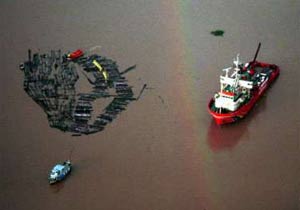
Illegal logging in the Amazon
The world's ancient forests are in trouble. Only one fifth of original forest cover globally remains in large tracts, and almost half of that is under threat from activities such as mining, agriculture and, most importantly, commercial logging. Of the remaining ancient forests, the largest is the Amazon. The size of Western Europe - an area of 370 million hectares - the Brazilian Amazon alone comprises one third of the world's remaining tropical forests.
To date, approximately two thirds of Brazil's ancient Amazon forest remains - and can still be protected. But even here, more than half of the forest is threatened. And since one fifth of all the world's threatened frontier forest lies in the Brazilian Amazon, and it is increasingly being opened up by an uncontrolled logging industry, this region clearly emerges as the focus of threat to the planet's remaining ancient forest.
Over the past 30 years 15% of the Brazilian Amazon has been completed destroyed, reaching over 590,000 square kilometres - an area larger than France. One of the main driving forces behind this destruction has been the dramatic increase in predatory and illegal logging.
In 1997 alone, Brazil's logging industry damaged as much as 1.5 million ha of its Amazonian forest, this penetration into closed forest areas opened up the way to subsequent deforestation.
In the last two decades, the Amazon's contribution to Brazil's total production of tropical wood rose from 12 to 90 percent, the region providing an estimated 30 million cubic metres of logs per year. According to official data, it is estimated that 80 percent of logs cut in the Amazon are of illegal origin.
But even the majority of logging considered to be 'legal' is highly destructive and has poor processing technology, which leads to enormous wastage. On average it is estimated that, only around one third of wood logged in the forest actually ends up in the final product.


